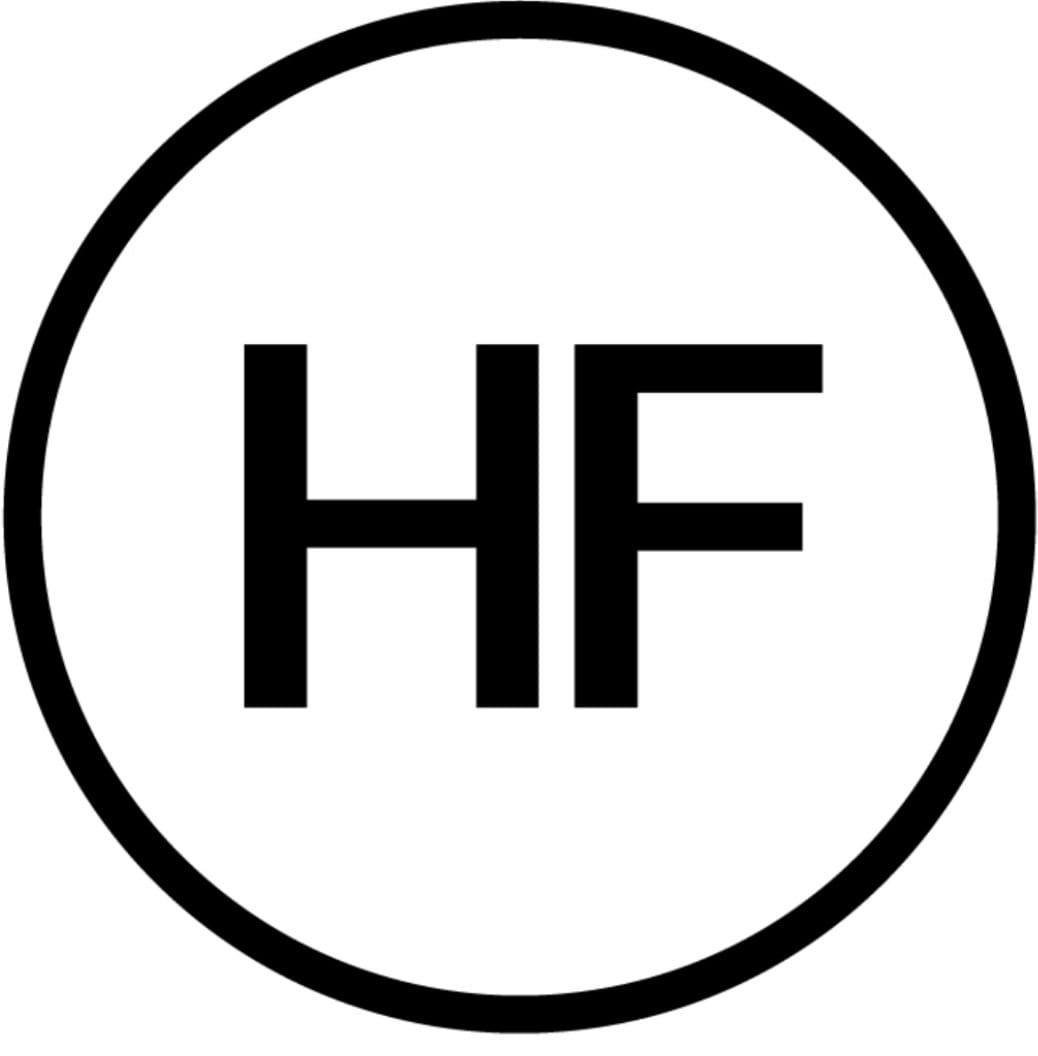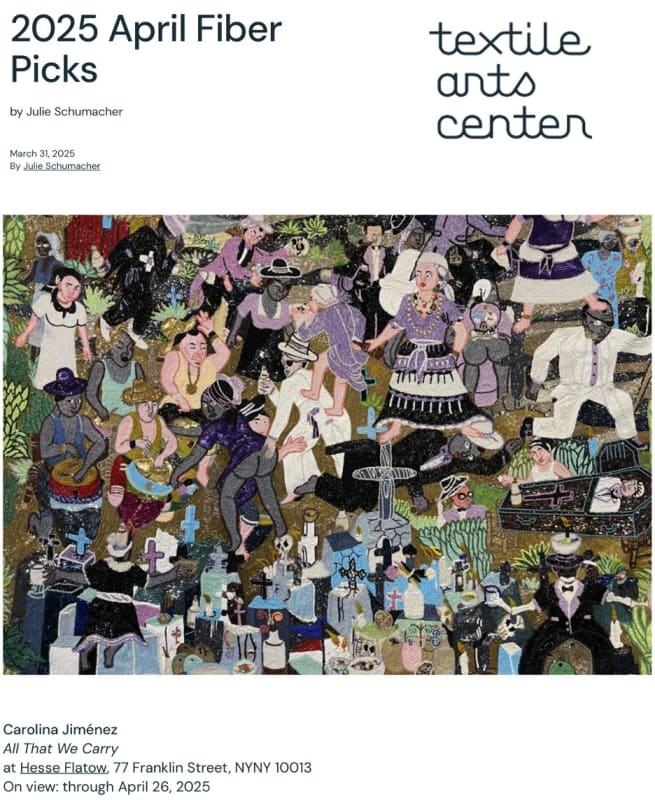The exhibition space, located in the downstairs gallery, is quiet and intimate. As you turn the banister into the first room, the work titled Huipil, Me diste sopa de fideo, me diste el mundo (You gave me soup, you gave me the world, Huipil), (2024) greets you. This large piece—108x72 inches—is made up of more than a dozen panels, each with taut and draping linen and cotton weavings in desert hues of cutch, indigo, and fustic dyes, all puzzle-pieced together. It’s stunning and worth the show in itself. Viewing it, in your periphery, you can view the full second room—the entire exhibition—and an immediate takeaway is how each piece feels like a sister to each work—like a really good mixtape or concept album, all the twelve or so pieces in the show go together beautifully, creating an environment and certain calm.
Jiménez’s work in All That We Carry is organic yet geometric. In many of her woven paintings, here is a sense of geometry play and color exploration á la Josef Albers and the potent-yet-dulled color inherent in much dyework as well as the technical precision of Anne Albers—appropriate, as Jiménez just finished her residency at the Albers Foundation—yet her work is all her own. Geometry is complicated with gesture and the use of relief to create uncommon shapes, and precision is complicated by bulked fibers. Less of studies, these pieces feel whole and resolved.
Facing the door to the second room, standing alone at one wall at 96x85x14 inches, is the work Alone (with you) at the Pond, (2025). Almost like a deconstructed tapestry, the unwoven fibers in “jewel-toned hues”—blues into purples into pinks—cascade like waves between long wood panels. The panels themselves are structural, yet compositionally, they serve as the geometry that ties to the other works. Unlike most of the other works where the stretcher bars or frames for the woven paintings are covered by weavings or colored over, these wood beams remain raw and compositional. The beams also serve to secure the sculpture’s scalloping, unwoven weft, and, at the point where the beams and the fibers meet, the warp and weft become tight, intricate, and masterfully woven weavings stapled like a raw canvas. The work is stunning.
These descriptions hardly cover the range of works and processes Jiménez explores in this exhibition. In discussing this work, the idea of process came up often because there are layerings and weavings, wrapping and bundles, and combinations of those thoughtfully rendered. The different hats—the different processes—come to mind, but the creative, aesthetic, and conceptual decisions are paramount. The show’s curator, Kiko Aebi—also the Katz Curator at the Colby College Museum of Art in Maine—beautifully summerizes this in exhibition writeup: “Jiménez’s woven paintings operate as a taxonomy of material gestures: dyed, stretched, foled, rolled, bundled, unraveling, propped against or pinned to the wall, stacked, or crumpled in a heap. [...] Through their wrinkles and creases, frayed edges and processes of making and unmaking, [garments] are our second skins, correspondingly inscribed with indexical markers of our personal and cultural inheritances.”


